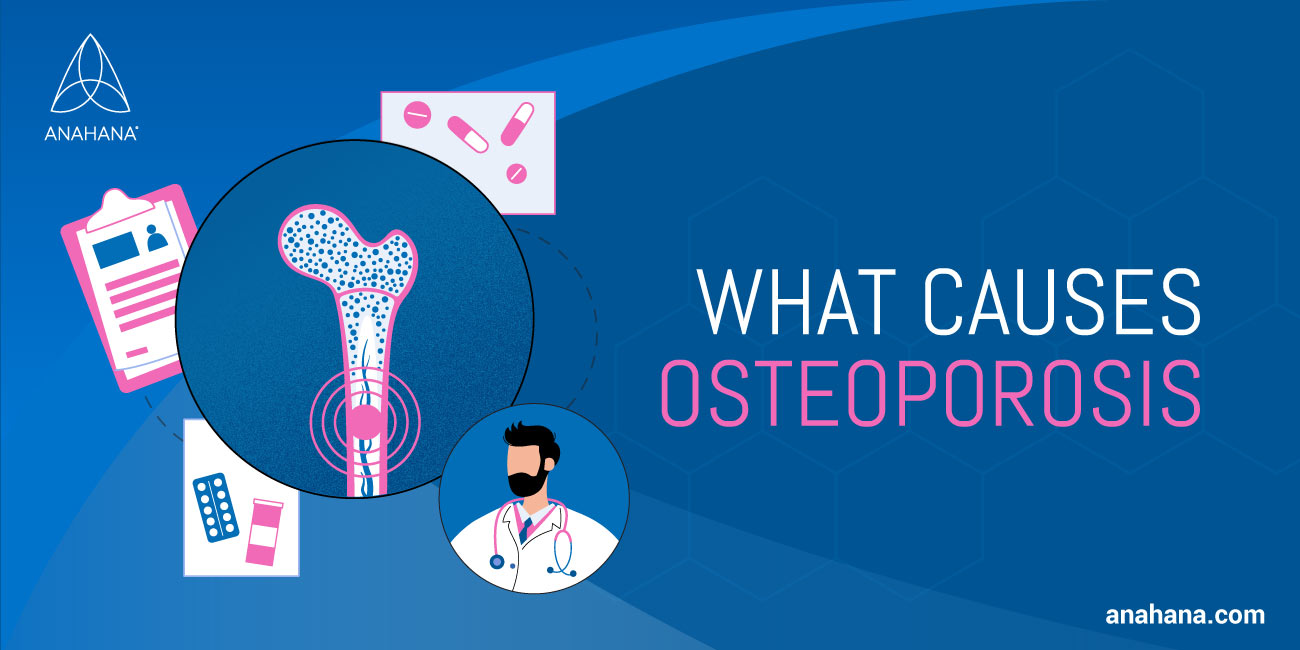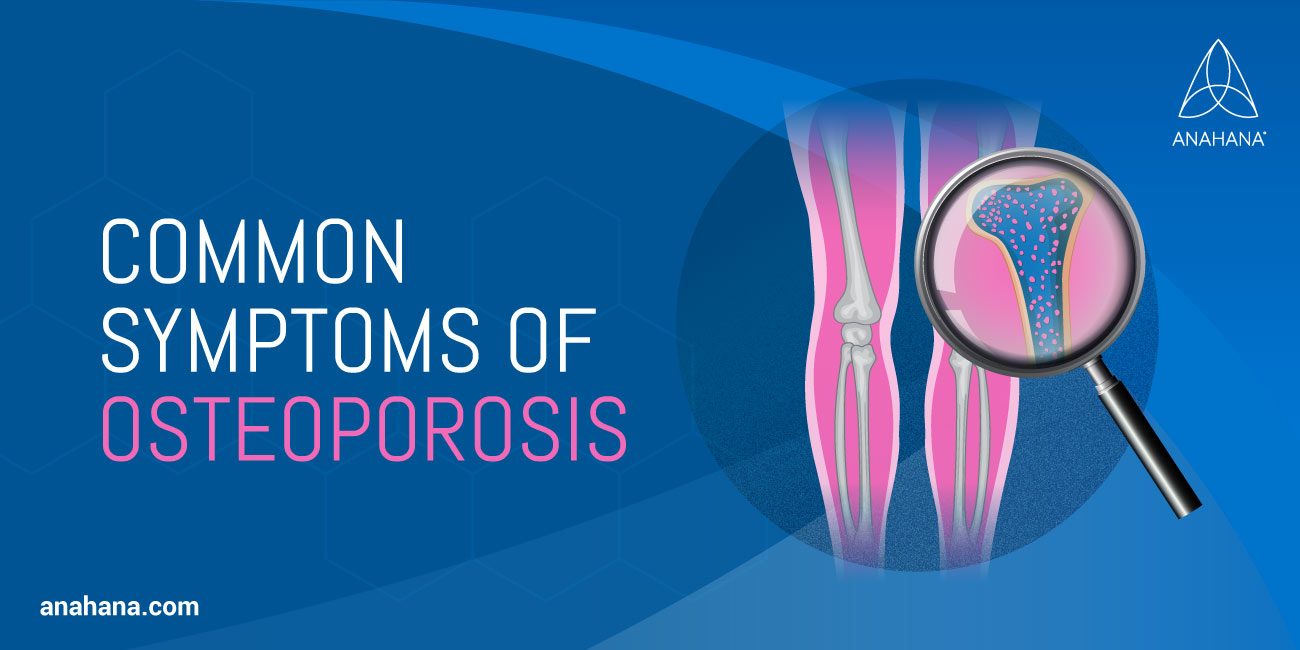4
What Is Osteoporosis
Last Updated: November 4, 2024

Table of Contents
A condition characterized by decreased bone density, putting people at an increased risk of bone fractures.
Key Takeaways
- Definition: Osteoporosis is a bone disease characterized by decreased bone density, leading to weak and brittle bones.
- Risk Factors: Higher risk for postmenopausal women, white and Asian women, those with a family history, rheumatoid arthritis, low calcium or vitamin D, smoking, and muscle weakness.
- Symptoms: Often asymptomatic until a broken bone occurs, leading to changes in posture and height loss.
- Bone Health: Maintaining healthy bone density through diet and weight-bearing exercise is crucial.
- Treatments: Include medications that increases bone density, lifestyle changes, weight, bearking exercise, muscle relaxants, physical therapy, and adequate intake of calcium and vitamin D to increase bone health.
What is Osteoporosis
The word osteoporosis means porous bone. Osteoporosis is sometimes referred to as "the silent disease" because it can progress for several years without symptoms. Osteoporosis is a disease that results in low bone mass and decreased bone strength. In healthy bone, some bone tissue will break down, and new bone tissue will replace the bone loss. In people with osteoporosis, bone loss is more significant than the generation of new bone. This causes the bones to because weaker and more brittle.
One of the most significant risk factors of osteoporosis is that it puts a person at an increased risk of bone fractures, even from mild impact. Some of the most common fractures seen in people with osteoporosis are hip fractures, wrist fractures, and spine fractures.
Risk factors and Causes of Osteoporosis
 Some risk factors for developing osteoporosis include a family history of osteoporosis, insufficient calcium or vitamin D, long periods of inactivity, smoking, and low BMI. Another risk factor is older age, as the risk of osteoporosis increases as a person gets older. Women are four times more likely to develop osteoporosis and are significantly more prone to osteoporosis after menopause. After age 50, one in two women is expected to have an Osteoporosis related fracture in their lifetime. A small frame is another risk factor for osteoporosis, as people with small frames have less bone mass overall.
Some risk factors for developing osteoporosis include a family history of osteoporosis, insufficient calcium or vitamin D, long periods of inactivity, smoking, and low BMI. Another risk factor is older age, as the risk of osteoporosis increases as a person gets older. Women are four times more likely to develop osteoporosis and are significantly more prone to osteoporosis after menopause. After age 50, one in two women is expected to have an Osteoporosis related fracture in their lifetime. A small frame is another risk factor for osteoporosis, as people with small frames have less bone mass overall.
Hormone levels can also indicate an increased risk of developing osteoporosis. Specifically, low estrogen levels in women due to menopause significantly increase the risk for osteoporosis. Low levels of testosterone, most commonly caused by treatments for prostate cancer in men, is also an increased risk factor for osteoporosis. Certain medications, such as corticosteroids, can also interfere with the body's development of new bone tissue, increasing the risk of osteoporosis. Eating disorders and diets low in vitamins and minerals such as vitamin D and Calcium also put a person at a greater risk of osteoporosis. Some other conditions that are linked to osteoporosis include; over-active thyroid glands, lung disease, cancer, and endometriosis
The cause of osteoporosis at this time is primarily unknown. It is known that the body stores calcium and minerals in bone. Bone will break down and then rebuild (bone remodeling) to allow the body to absorb calcium when needed. With people with osteoporosis, the bone breakdown is greater than the rebuilding of the bone, causing weakened bones and low bone density.
Diagnosis of Osteoporosis
Osteoporosis is most often diagnosed with a bone density test, also known as a DEXA scan which can test for bone mineral density. A doctor may also use screening questions, relevant risk fractures, and physical exams to diagnose.
Symptoms and Complications of Osteoporosis
 There are often no symptoms in the early stages of the development of osteoporosis. Once there is a significant loss in bone mass, symptoms may include bone fractures that occur with little impact, a change in posture, and a loss in height.
There are often no symptoms in the early stages of the development of osteoporosis. Once there is a significant loss in bone mass, symptoms may include bone fractures that occur with little impact, a change in posture, and a loss in height.
The most significant complication of osteoporosis is the increased fracture risk. Specifically, with a hip fracture or spinal fractures, there can be substantial decreases in mobility, independence, and even the development of long-term disability. Spine fractures can sometimes occur even without a fall or impact. Spine fractures can cause chronic pain and hunched posture.
Treatments of Osteoporosis
Different medications are used to treat Osteoporosis, including; Calcitonin, Raloxifene, Bisphosphonates, and Denosumab. Most of these medications decrease the rate of the breakdown of bones to reduce bone loss and preserve bone strength.
At-home management for osteoporosis includes staying active through manageable forms of exercise. These forms of exercise should focus on balance to prevent falls, weight-bearing exercises which keep bones strong, and strengthening exercises. Yoga is a form of exercise that supports maintaining balance and flexibility. Certain types of yoga, such as Hatha and restorative yoga, are lower impact and most suitable for people with osteoporosis.
It is also beneficial to consume a diet with adequate Calcium and Vitamin D. If this is not possible, calcium supplements can be an alternative method for receiving the proper daily dose of calcium. Physical therapy is a treatment that with overall balance and strength. Support groups are also beneficial for managing the emotional impact of being diagnosed with osteoporosis.
Frequently Asked Questions
Can you prevent osteoporosis?
-
Some lifestyle choices help to prevent bone density loss, including remaining physically active, practicing weight-bearing and strengthening exercises, eating a balanced diet with enough calcium and vitamin D, maintaining a healthy weight, limiting alcohol consumption, and smoking.
When should I have a doctor's check for osteoporosis?
-
Bone density tests should be performed for women over 65 and men over 70 or earlier if they have osteoporosis-related risk factors. It is essential to talk to your doctor if there is a history of osteoporosis in the family and if one is experiencing symptoms such as multiple fractures and back pain.
How can you prevent fractures with osteoporosis?
-
Try to prevent falls by working on balance and strengthening exercises, using walking aids such as walkers or canes when necessary, set up the home with proper lighting and rails when required.
Resources
Osteoporosis - Symptoms and causes - Mayo Clinic
Osteoporosis | National Institute on Aging.
Osteoporosis: Symptoms, Causes, Tests & Treatment
Osteoporosis: What You Need to Know as You Age | Johns Hopkins Medicine
Can I Do Yoga If I Have Osteoporosis
What You Can Do Now to Prevent Osteoporosis | Johns Hopkins Medicine
Osteoporosis treatment: Medications can help - Mayo Clinic.
Yoga for Osteoporosis: 5 Beneficial Poses & How to Do Them
Disclaimer
The contents of this article are provided for informational purposes only and are not intended to substitute for professional medical advice, diagnosis, or treatment. It is always recommended to consult with a qualified healthcare provider before making any health-related changes or if you have any questions or concerns about your health. Anahana is not liable for any errors, omissions, or consequences that may occur from using the information provided.

Dr. Darlene Buan-Basit is a highly experienced licensed Chiropractor and Pilates instructor with expertise in many techniques, including Medical Acupuncture, Traditional Chinese Medicine, and Advanced Massage Techniques.
